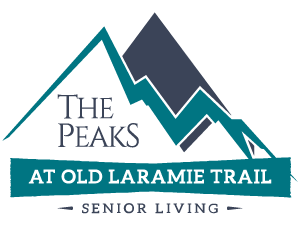Moving a loved one with dementia to a memory care unit can be an emotional decision. It’s a brave step towards ensuring they get specialized care. As they transition, they’ll interact with new team members, and this change can be overwhelming for them. How do we make this process smoother? How do we help our loved ones feel at home, trust their new caregivers, and settle into their new community?
Adopting a Personal Touch
Every individual has unique needs, preferences, and memories. By sharing stories, photographs, and little quirks about your loved ones, you help the team members in the memory care unit understand them better. When caregivers know that Mrs. Johnson enjoys 50s jazz music or Mr. Smith has a penchant for crossword puzzles, they can incorporate these into their daily interactions. This familiarity helps residents feel valued and understood, fostering trust and comfort.
Regular Visits From Family Members
Visiting your loved ones regularly is crucial during the initial stages of their move. Not only does it provide emotional support to your family members, but it also allows you to build a relationship with the team in the community. As your loved one sees familiar faces, it reinforces the idea that they are in a safe place. Moreover, your presence can help team members understand the kind of support and care your family member needs, ensuring personalized care.
Joining Community Activities
Memory care units often offer a myriad of events and activities tailored for their residents. These can range from art classes to music therapy and group exercises. Encourage your family members to participate. Joining these sessions with them, especially in the beginning, can give them the confidence to engage more. Interacting with other residents and becoming part of the community’s fabric can significantly ease their adjustment process.
Open Communication With The Team
Maintaining an open line of communication with the memory care team is paramount. This ensures that your concerns, suggestions, or feedback are promptly addressed. The team is there to help, and understanding your loved one’s daily routines, behaviors, and any changes in their health can assist in providing optimal care. Regular meetings or check-ins with the community’s team members allow for a collaborative approach, ensuring your family member’s well-being.
Familiar Items In Their Living Space
Imagine moving to a new place with none of your personal belongings. It would feel alien and uncomfortable. The same applies to our loved ones with dementia. When setting up their new living space, include familiar items. This could be a favorite armchair, photographs, or a cherished blanket. These items provide a touch of home and familiarity in a new environment. Over time, this personal touch can make a significant difference in helping them adjust to their new surroundings and caregivers.
Consistent Routines
Routines offer comfort, especially to those with dementia. With the progression of the disease, unfamiliar practices can be confusing and distressing. When moving into memory care units, keeping some semblance of their previous daily routine is essential. Whether it’s waking up at a particular time, having tea in the afternoon, or a bedtime ritual, these familiar actions provide a sense of normalcy. The team members should be informed of these routines so they can assist in maintaining them, making the transition smoother for the resident.
Involve Them in the Transition Process
Although they may have dementia, involving your loved ones in the transition can be beneficial. Depending on their cognitive state, this could be as simple as discussing the move, choosing decor for their new space, or visiting the community before the move. Being a part of the decision-making process gives them a sense of control in a situation where they might feel they have none.
Utilize Memory Boxes
Memory boxes are a valuable tool in memory care units. These boxes typically contain souvenirs, photographs, and other significant items for the resident. Team members can use them to initiate conversations, jog memories, or comfort the resident. When your loved one is adjusting to new caregivers, these boxes can act as a bridge, fostering connection and understanding between the resident and the team member.
Implement Technology
In today’s digital age, technology is pivotal in bridging gaps. Tools like digital photo frames with family photos can provide comfort. Video calls with family members, primarily those rarely visit, can also be facilitated. Some communities have even started using virtual reality for reminiscence therapy, allowing residents to visit familiar places from their past. Embracing such technological tools can significantly enhance the quality of life for your loved one in a memory care unit.
Continuous Education for Team Members
Dementia care is an ever-evolving field. As we understand more about the disease, care methods improve. Team members in memory care units must regularly undergo training and education. This ensures they are equipped with the latest knowledge and fosters empathy and patience. As caregivers understand the intricacies of the disease, they are better positioned to offer tailored care, making the adjustment process for new residents more streamlined.

